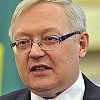Главное: АНАЛИТИКА
0
309
17 december 2025
Интервью с интервью с генеральным директором Tanssi Foundation Тиаго Рюдигером Рангелем
Практическая реализация потребует действий от конкретных финансовых институтов, и здесь принципиальная…
Суть нынешнего правого поворота в Латинской Америке — не в классическом консерватизме, а в запросе на…
О климатических и финансовых рекордах в рамках договоренностей о противодействии глобальному потеплению
Об «Активной и независимой внешней политике» Индонезии в новых условиях
Доклад Международного дискуссионного клуба «Валдай»
G8?!
10 december 2025
Fares Kilzie
Перестройка: сорок лет спустя
5 december 2025
Alexei Fenenko Колонки экспертов
Не случайность, а следствие незавершенной трансформации партийной системы
Short
Экономическое сотрудничество России и ОАЭ: возможности для ведения бизнеса и развития торговли
December 15, 2025
Глеб Худяков
Эрбиль как дипломатический хаб: США меняют подход к Ираку
December 12, 2025
Fahil Abdulbasit Abdulkareem
Гондурас на распутье: страна находится на грани раскола из-за результатов выборов
December 11, 2025
Александр Воробьев
Курс на Запад: зачем Пашинян отправился в Германию?
December 10, 2025
Milan Lazovich Poll conducted
-
In your opinion, what are the US long-term goals for Russia?
U.S. wants to establish partnership relations with Russia on condition that it meets the U.S. requirements 33 (31%) U.S. wants to deter Russia’s military and political activity 30 (28%) U.S. wants to dissolve Russia 24 (22%) U.S. wants to establish alliance relations with Russia under the US conditions to rival China 21 (19%)








